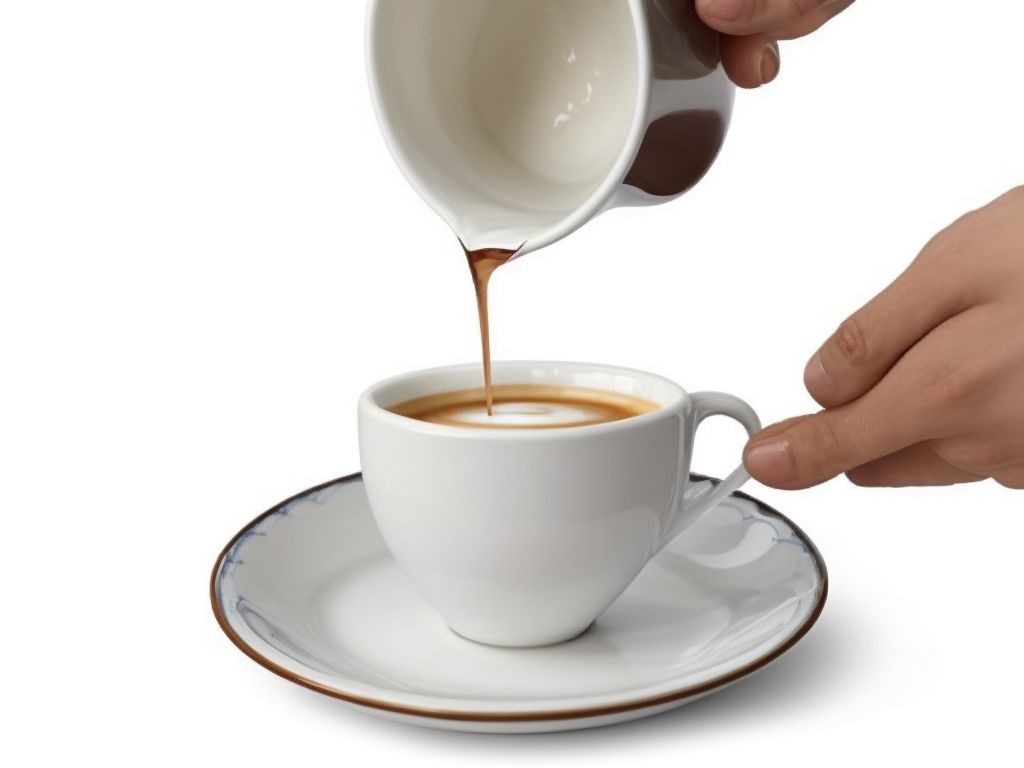This post may contains affiliate links which means I may receive a commission from purchases made through links. Learn more on my affiliate disclaimer.
Introduction
Siphon coffee brewing is a unique and captivating method that allows coffee enthusiasts to experience the perfect cup of joe. Understanding the intricacies of this brewing technique is key to unlocking the full potential of flavor and aroma in every sip. In this article, we will delve into the art of siphon coffee brewing and discover ten powerful tips to achieve brewing mastery. But first, let’s grasp the fundamentals.
To comprehend the essence of siphon coffee brewing, it is essential to grasp the concept of a siphon coffee maker and how it works.
A siphon coffee maker, also known as a vacuum coffee maker, consists of two chambers, an upper and lower, connected by a tube or pipe. This ingenious device utilizes vapor pressure and vacuum suction to brew a robust and flavorful cup of coffee.
The brewing process begins by heating water in the lower chamber until it reaches a boiling point. As vapor pressure builds, it forces water to rise into the upper chamber, where it mixes with the coffee grounds. After achieving an ideal brewing time, the heat source is removed, and the brewed coffee filters back into the lower chamber due to the vacuum created. The result is a clean, aromatic, and full-bodied coffee.
Now that we have a basic understanding of siphon coffee brewing, let’s explore ten powerful tips that will unlock the potential for siphon coffee perfection.
1. Choosing the Right Coffee Beans
2. Grinding Your Coffee to the Ideal Consistency
3. Proper Water Temperature
4. Mastering the Bloom Phase
5. Finding the Right Brew Ratio
6. Ensuring Proper Brew Time
7. The Art of Stirring
8. Controlling Heat Source
9. Decanting with Precision
10. Experimentation and Personalization
By following these tips, you will be able to brew siphon coffee that transcends usual coffee experiences. However, brewing challenges may arise, so we will also address common troubleshooting issues to overcome any obstacles that may hinder your siphon coffee journey.
- Choosing the right coffee beans: Select high-quality beans that suit your taste preferences for the best siphon coffee experience.
- Grinding your coffee to the ideal consistency: Consistency plays a crucial role in siphon coffee brewing. Adjust your grinder settings to achieve the perfect particle size.
- Proper water temperature: Maintain the ideal water temperature to ensure optimal extraction and flavor. Experiment with different temperatures to find your preferred taste.
Understanding the Siphon Coffee Brewing Method
Understanding the siphon coffee brewing method is essential for enhancing your coffee brewing experience. The siphon coffee brewing method is a distinctive process that harmoniously combines science and art to produce a rich and aromatic cup of coffee. To gain a thorough understanding of this method, consider the following points:
1. Setup: Commence by assembling the siphon apparatus, ensuring that the upper and lower chambers are securely attached.
2. Water and Coffee Ratio: For optimal extraction, employ a ratio of 1:15 or 1:16 (coffee to water). For instance, if you utilize 20 grams of coffee, aim for 320-340 grams of water.
3. Grind Size: Choose a medium-fine grind to achieve the ideal extraction. Overly fine grind can lead to over-extraction, while excessively coarse grind may result in under-extraction.
4. Heat and Timing: Apply heat to the lower chamber to create a pressure difference, compelling the water to ascend into the upper chamber. Maintain a consistent temperature by regulating the heat throughout the brewing process.
5. Bloom: Initiate the process by introducing a small amount of water to moisten the coffee grounds, allowing them to bloom for about 30 seconds. This aids in releasing the trapped carbon dioxide gas, contributing to a cleaner taste.
6. Stirring: After blooming, gently stir the slurry to ensure even extraction. Employ a spoon or paddle to agitate the coffee grounds.
7. Brew Time: Allow the coffee to brew for approximately 1.5 to 2 minutes, depending on your desired strength. Adjust the brew time according to your personal taste preferences.
8. Filtering: Cease the application of heat and allow the brewed coffee to filtrate back into the lower chamber. The resulting liquid should be free of any coffee grounds or sediments.
9. Serving: Serve the siphon-brewed coffee promptly to experience the utmost flavor profile. Delight in the intricate and unparalleled flavors that this brewing method brings forth.
10. Cleanup: Thoroughly clean the siphon apparatus after each use to ensure the longevity of your brewing equipment.
By comprehending and mastering the siphon coffee brewing method, you will unlock a realm of diverse and captivating coffee flavors, elevating your overall coffee enjoyment.
What is a Siphon Coffee Maker?
A siphon coffee maker, also known as a vacuum coffee maker or a syphon coffee maker, is a unique brewing device that combines science and artistry to deliver a truly exceptional coffee experience. What is a siphon coffee maker? It uses both vapor pressure and vacuum suction to create a delicious and aromatic cup of coffee. This classic brewing device consists of two chambers, typically made of glass, stacked on top of each other.
The bottom chamber holds the water, which is heated to a specific temperature. As the water heats up, it creates vapor pressure, pushing the water upwards into the top chamber. This upward movement causes the coffee grounds placed in the top chamber to mix with the hot water, allowing the flavors and aroma to be extracted.
Once the brewing process is complete, the heat source is removed, and the vapor pressure decreases. This reduction in pressure creates a vacuum effect, causing the brewed coffee to be drawn back down into the bottom chamber, leaving the coffee grounds behind in the top chamber. The result is a clean and sediment-free cup of coffee.
Siphon coffee makers offer a unique brewing experience and are often favored by coffee enthusiasts who appreciate the precision and attention to detail required for a perfect cup. What is a siphon coffee maker? It is a brewing device that allows for optimal extraction of flavors and oils from the coffee grounds, resulting in a smooth and flavorful brew.
The siphon coffee maker, also known as a vacuum coffee maker or a syphon coffee maker, is a classic brewing device that combines science and artistry to deliver a truly exceptional coffee experience. Its intricate design and meticulous brewing process make it a favorite among coffee aficionados who savor the rich and nuanced flavors that it produces.
How Does Siphon Coffee Brewing Work?
Siphon coffee brewing is a unique method that combines vapor pressure and vacuum suction to draw out the flavors and aromas from coffee grounds. So, how does siphon coffee brewing work? Well, let me explain.
To begin, the lower chamber of the siphon coffee maker is used to heat water until it reaches the boiling point. As the water gradually heats up, pressure starts to build, causing it to move upwards into the upper chamber. This is where the coffee grounds are waiting.
Once the water reaches the top chamber, it joins forces with the coffee grounds and steeps for a set amount of time, allowing the flavors to infuse and create a delightful brew.
After the steeping phase, the heat source is removed, and the lower chamber begins to cool. As it cools, a vacuum is formed. This vacuum then starts to pull the brewed coffee back down through a filter and into the lower chamber, leaving behind the used coffee grounds. The end result is a remarkably clean and flavorful cup of coffee with a smooth and delicate taste.
Now, it’s worth mentioning that siphon coffee brewing has gained a reputation as a theatrical brewing method for a good reason. The entire process is visually mesmerizing, with the water rising, coffee grounds swirling, and ultimately, the extraction of the delicious final product. This captivating and satisfying experience truly appeals to coffee enthusiasts.
So, that’s how siphon coffee brewing works! It’s an intricate process that combines science and art to bring you a truly enjoyable coffee drinking experience.
10 Powerful Tips for Siphon Coffee Perfection
Brewing the perfect cup of siphon coffee is an art that requires finesse and technique. In this section, we uncover the 10 powerful tips that will elevate your siphon coffee game to perfection.
From selecting the ideal coffee beans to adjusting water temperature just right, we leave no stone unturned. Get ready to explore the secrets behind mastering the bloom phase, finding the perfect brew ratio, and the art of stirring. We’ll also delve into the importance of controlling the heat source and decanting with precision.
And for those who crave experimentation and personalization, we’ve got a treat for you too! So, whether you’re a seasoned coffee enthusiast or just starting your brewing journey, get ready for an immersive experience that will set you on the path to siphon coffee mastery!
Choosing the Right Coffee Beans
When it comes to siphon coffee brewing, choosing the right coffee beans is crucial for achieving the perfect cup of coffee. To ensure the best flavor, consider the following key factors:
- Origin: Different regions around the world produce coffee beans with distinct flavors and characteristics. Whether you prefer a bright and fruity profile from Ethiopian beans or a rich and chocolaty taste from Brazilian beans, the origin of the coffee beans plays a significant role in determining the overall flavor.
- Roast Level: The roast level is a critical factor that influences the depth of flavor and intensity of the coffee. If you enjoy delicate flavors, lighter roasts are ideal as they preserve the natural essence of the beans. On the other hand, if you prefer bolder and more caramelized notes, darker roasts will be the perfect choice. Selecting a roast level that aligns with your personal taste preferences is key.
- Freshness: For capturing the peak flavors, opt for freshly roasted beans. Look for the roast date on the packaging and prioritize beans that have been roasted within the past few weeks. Fresh beans offer greater complexity and aroma compared to older ones, ensuring a delightful coffee experience.
- Bean Variety: When choosing coffee beans, consider the two main types – Arabica and Robusta. Arabica beans are renowned for their superior quality and nuanced flavors, while Robusta beans are generally stronger and contain more caffeine. Depending on your desired taste and caffeine content, selecting the appropriate bean variety is crucial.
- Sustainable and Ethical Sourcing: It’s important to support fair trade practices and environmentally friendly farming methods. Look for certifications such as Fair Trade, Rainforest Alliance, or Organic, which ensure that the coffee beans have been ethically sourced. By choosing coffee beans that prioritize sustainability, you contribute to a better future for the coffee industry.
By considering these factors and exploring the vast variety of coffee beans available, you can elevate your siphon coffee brewing experience and enjoy a delicious and flavorful cup of coffee.
Grinding Your Coffee to the Ideal Consistency
To achieve the perfect cup of siphon coffee, it is crucial to grind your coffee to the ideal consistency. Follow these steps to ensure you get the best results:
- Select the right grinder. Invest in a high-quality burr grinder for precise and consistent grinding.
- Set the grind size. Adjust the grinder settings to achieve the ideal medium-fine consistency. This consistency allows for proper extraction without over or under-extraction.
- Weigh the coffee beans. Use a digital scale to measure the desired amount of coffee beans. A good starting point is 1 gram of coffee per 15 grams of water.
- Grind the coffee. Place the coffee beans in the grinder and grind them to the desired ideal consistency. The coffee grounds should be uniform in size.
- Avoid grinding too coarse. Coarser grounds can result in under-extraction and weak-flavored coffee.
- Avoid grinding too fine. Finer grounds can lead to over-extraction and bitter-tasting coffee.
- Aim for a consistency similar to granulated sugar. The coffee grounds should be slightly coarse, allowing the water to pass through evenly during the brewing process.
- Store the freshly ground coffee properly. After grinding, transfer the coffee grounds to an airtight container to preserve freshness and prevent oxidation.
- Grind just before brewing. For the best flavor, grind the coffee beans immediately before starting the siphon brewing process. This ensures optimal aroma and taste.
- Experiment and adjust. Depending on your preference, you may need to fine-tune the grind size to achieve your desired flavor profile. Don’t be afraid to experiment and make adjustments accordingly.
Proper Water Temperature
Proper water temperature is crucial when it comes to achieving the ideal cup of siphon coffee. It is recommended that the water temperature falls within the range of 195 to 205 degrees Fahrenheit (90 to 96 degrees Celsius)[1]. If the water is too hot, it can lead to over-extraction, resulting in a bitter taste. On the other hand, if the water is too cold, it won’t extract enough flavor from the coffee grounds[2].
To ensure the appropriate water temperature, it is advisable to use a thermometer to measure the water temperature before adding it to the siphon coffee maker. If the water is too hot, allow it to cool slightly. If it is too cold, heat it up to the recommended temperature range[3].
It is equally important to maintain a consistent water temperature throughout the brewing process. The siphon coffee maker should be designed to keep the water at the desired temperature during brewing. Any significant drop in temperature during brewing can impact the extraction and flavor of the coffee[4].
By paying attention to the proper water temperature, you can enhance the flavor and quality of your siphon coffee. It’s worth experimenting with different water temperatures and brewing times to find the combination that best suits your taste preferences[5].
Remember, brewing siphon coffee is an art, and mastering the proper water temperature is just one of the many factors involved. With practice and experimentation, you can unlock the full potential of siphon coffee brewing and enjoy an exceptionally delicious cup of coffee.
Mastering the Bloom Phase
To truly master the bloom phase in siphon coffee brewing, it is important to follow a few key steps:
- Begin by heating the water to the ideal temperature of 200°F.
- Next, add the freshly ground coffee to the top chamber of the siphon, using a ratio of 1 tablespoon of coffee per 5 ounces of water.
- Gently pour a small amount of hot water over the coffee grounds, ensuring they are fully saturated.
- Carefully stir the coffee grounds and water together to achieve an even extraction.
- Allow the coffee to bloom for approximately 30 seconds to a minute, which will allow any trapped gases in the grounds to escape.
- Once the bloom phase is complete, slowly add the remaining hot water to the top chamber.
- Attach the bottom chamber of the siphon and heat it over a suitable heat source.
- As the water in the bottom chamber begins to boil, the vacuum seal will cause the water to rise into the top chamber.
- Permit the coffee to brew for the recommended time, usually around 2-3 minutes.
- After the brewing process is finished, remove the siphon from the heat source and gently stir the coffee to ensure it is well-mixed.
Mastering the bloom phase is absolutely essential in siphon coffee brewing, as it allows for the release of gases and the extraction of flavors from the coffee grounds. By following these steps, you will be on your way to enjoying a delicious and perfectly balanced cup of siphon coffee.
Finding the Right Brew Ratio
When it comes to siphon coffee brewing, finding the right brew ratio is crucial for achieving the perfect cup of coffee. Here are the steps to help you find the ideal brew ratio:
- Start with a 1:15 coffee-to-water ratio. For example, if you’re using 20 grams of coffee, add 300 milliliters of water.
- Experiment with different ratios to suit your taste preferences. If you prefer a stronger brew, try using a 1:14 ratio. For a milder flavor, you can go for a 1:16 ratio.
- Adjust the ratio based on the coffee beans you’re using. Some beans may require a slightly different ratio to bring out their best flavors.
- Keep in mind that the brew ratio also depends on the grind size of your coffee. Finer grinds usually require less water, while coarser grinds may need more water to extract the desired flavors.
- Take note of the brewing time. If your coffee tastes too weak, you may need to increase the brew time. For a stronger brew, you can decrease the brew time slightly.
Remember, finding the right brew ratio is a personal preference. Experiment and adjust until you discover the perfect balance of flavors that suits your taste. Enjoy the process of brewing your own siphon coffee masterpiece!
Ensuring Proper Brew Time
Ensuring proper brew time is crucial for achieving the perfect cup of siphon coffee. Here are the steps to follow:
- Start by heating the water in the lower chamber of the siphon coffee maker.
- While the water is heating, grind your coffee beans to the ideal consistency.
- Once the water reaches the desired temperature, place the upper chamber on top and secure it tightly.
- Add the ground coffee to the upper chamber and give it a gentle stir to ensure all the grounds are evenly saturated.
- Allow the coffee to brew for the recommended time, which is usually around 2-3 minutes.
- During the brew time, monitor the coffee’s color and clarity to ensure it is extracting properly.
- Once the brew time is complete, remove the heat source and let the coffee settle for a few seconds.
- Carefully decant the brewed coffee into your cup, leaving any sediment behind.
To enhance your siphon coffee brewing experience, consider the following suggestions:
- Experiment with different brew times to find your preferred strength and flavor profile.
- Use a timer to accurately measure the brew time and maintain consistency.
- Keep a watchful eye on the water temperature throughout the brewing process.
- Remember to clean your siphon coffee maker thoroughly after each use to preserve its performance.
The Art of Stirring
The art of stirring, also known as “The Art of Stirring,” is a crucial step in achieving the perfect cup of siphon coffee. To enhance the flavors and extraction of the coffee grounds, follow these essential tips:
- Start with gentle agitation: Using a spoon or paddle, gently stir “The Art of Stirring” the coffee grounds in a circular motion to ensure even saturation.
- Frequency of stirring: Stir “The Art of Stirring” the coffee grounds at the beginning of the brewing process and again after the bloom phase. This helps to distribute the water and release trapped gases, leading to better extraction.
- Consistency of stirring: Maintain a consistent speed and depth while “The Art of Stirring” stirring. Avoid stirring too vigorously to prevent agitation that can lead to over-extraction.
- Direction of stirring: Stir “The Art of Stirring” in a clockwise or counterclockwise direction consistently throughout the brewing process. This ensures even extraction and consistent flavor.
- Duration of stirring: Stir “The Art of Stirring” for about 10-15 seconds each time. Avoid over-stirring, as this can cause excessive turbulence and negatively impact the extraction process.
To further enhance your siphon coffee experience, consider these suggestions:
- Experiment with different stirring techniques: Try variations in speed, depth, and duration of stirring to find what works best for your taste preferences.
- Use a timer: Timing your stirring intervals can help maintain consistency and control over the brewing process.
- Practice patience: Allow the coffee grounds and water to interact during the brewing process. Avoid rushing or disrupting the extraction by stirring too frequently or vigorously.
By mastering “The Art of Stirring,” you can ensure a well-extracted and flavorful cup of siphon coffee every time.
Controlling Heat Source
To effectively control the heat source in siphon coffee brewing, it is important to follow these steps:
- Choose the right heat source: Make sure to select a heat source that can provide consistent and controllable heat. This includes options such as a butane burner, electric burner, or a gas stove.
- Start with medium heat: Begin by setting the heat source to medium intensity. This will enable the water in the bottom chamber to gradually heat up, resulting in a more even extraction.
- Monitor the temperature: It is essential to use a thermometer to monitor the water temperature in the bottom chamber. The ideal brewing temperature for siphon coffee is between 195°F and 205°F (90°C to 96°C).
- Adjust the heat intensity: As the water starts to rise into the upper chamber, it is necessary to adjust the heat intensity to maintain a steady temperature. If the water rises too quickly or boils too vigorously, reduce the heat. Alternatively, if the water is not rising enough, increase the heat slightly.
- Maintain a steady heat: Throughout the brewing process, it is crucial to maintain a steady heat. Any fluctuations in temperature can result in an uneven extraction and affect the flavor of the coffee.
- Use a heat-resistant material: To ensure the safety of the siphon brewer, make sure that the heat source is not in direct contact with it. Place a protective mat or use a heat-resistant surface to prevent any damage to the equipment and maintain a safe brewing environment.
By closely following these steps and carefully monitoring the heat source, you can achieve optimal control over the brewing temperature and enjoy a delicious cup of siphon coffee.
Decanting with Precision
- Prepare a clean and heat-resistant vessel for precise decanting of the brewed coffee.
- Using a siphon coffee maker, carefully remove the upper chamber containing the brewed coffee from the heat source with precision.
- Allow the brewed coffee to settle and separate from the coffee grounds for a few moments before decanting with precision.
- Gently and slowly pour the brewed coffee into the decanting vessel, being cautious not to disturb the sediment at the bottom, maintaining precision.
- Observe the stream of coffee as it flows into the decanting vessel, ensuring it is smooth and consistent, showcasing precision.
- To enhance the precision of the pour, position the decanting vessel at a slight angle.
- Control the speed and flow rate of pouring with precision to prevent any splashing or turbulence.
- Aim for an even and controlled stream of coffee, ensuring the liquid moves smoothly without any interruptions, displaying precision.
- Stop pouring just before reaching the end of the brewed coffee, leaving behind any sediment or residue, showing precision in decanting.
- Serve the freshly decanted coffee immediately to enjoy its full flavor and aroma, savoring the precision in the decanting process.
Experimentation and Personalization
Experimentation and personalization are crucial elements in achieving the perfect cup of siphon coffee.
- Varying the coffee beans: One way to personalize your coffee experience is by trying different varieties and origins of coffee beans. This allows you to discover the flavor profiles that best suit your taste preferences. Experimenting with single-origin beans or blends can help you find your ideal combination.
- Adjusting grind consistency: Another aspect of experimentation and personalization is playing around with different grind sizes. This helps you find the right balance for your brewing method and desired flavor. Generally, finer grinds result in a stronger and more concentrated brew, while coarser grinds bring out different flavor notes.
- Water temperature experiments: To further explore the impact of different variables, try experimenting with water temperature. This can have a significant effect on the overall taste and extraction of your coffee. Adjusting the temperature slightly higher or lower may help you find the sweet spot.
- Modifying brew ratios: Personalizing your coffee also involves experimenting with different coffee-to-water ratios. This will determine the strength and intensity of your brew. Increasing or decreasing the amount of coffee used will directly affect the flavor profile.
- Adapting brew time: Another variable to consider is the brewing time. By adjusting and experimenting with different extraction levels through varying brewing times, you can achieve different results. Shorter brewing times may result in a brighter and lighter cup, while longer brewing times can bring out deeper and more robust flavors.
Throughout history, coffee enthusiasts have consistently strived to perfect the art of brewing. From the earliest methods of boiling coffee grounds to the sophisticated techniques of the siphon coffee maker, experimentation and personalization have been integral in unlocking the full potential of coffee flavor. By exploring different variables and adapting them to individual preferences, coffee lovers have cultivated a rich and diverse coffee culture that continues to evolve and flourish.
Troubleshooting Common Siphon Coffee Brewing Issues
Having trouble with your siphon coffee brewing? Don’t worry, we’ve got you covered! In this section, we’ll explore common issues that can arise during the siphon coffee brewing process. From vacuum seal problems to filter mishaps, we’ll dive into the nitty-gritty details of troubleshooting. Whether you’re experiencing over-extraction, under-extraction, or an unsatisfactory flavor profile, we’ll help you navigate through the challenges to achieve brewing mastery and ultimate coffee perfection. Get ready to unlock your siphon coffee potential!
Vacuum Seal Problems
When brewing siphon coffee, vacuum seal problems may arise, affecting the quality of the final cup. Here are some common issues to be aware of:
- Leaky seal: If the seal between the upper and lower chambers of the siphon coffee maker is not airtight, it can lead to air escaping during the brewing process. This may result in slower extraction and a weaker flavor.
- Insufficient seal: If the seal is not secure or tight enough, it can cause air to enter the system, disrupting the vacuum pressure needed for proper brewing. This can lead to uneven extraction and a less flavorful brew.
- Seal damage: Over time, the seal of the siphon coffee maker may become worn or damaged, compromising its effectiveness. This can result in air leaks or inadequate vacuum pressure, affecting the overall brewing process and taste.
It is important to regularly check the seal of your siphon coffee maker and replace it if necessary to avoid vacuum seal problems. A well-maintained and properly sealed siphon coffee maker ensures an optimal brewing experience.
Fact: The siphon brewing method, when executed correctly, allows for a full immersion brewing process that extracts the full flavor and aroma from coffee grounds, resulting in a uniquely rich and clean cup of coffee.
Filter Mishaps
- Add Inspect the filter: Before starting the brewing process, check the filter for any signs of filter mishaps. Ensure it is clean and intact, without any tears or holes that could allow coffee grounds to enter the final cup.
- Add Proper placement: Make sure to correctly position the filter inside the siphon coffee maker to avoid filter mishaps. It should fit snugly, with no gaps or misalignment.
- Add Avoid overpacking: To prevent overflow or clogging of the filter, be careful not to overfill it with coffee grounds. Use the correct amount for a successful brewing process without filter mishaps.
- Add Secure the siphon stick: When attaching the siphon stick to the upper chamber, ensure it is tightly fastened. This will prevent any leakage and potential filter mishaps during the brewing process.
- Add Avoid excessive agitation: When stirring the coffee grounds in the lower chamber, be gentle to avoid accidental movement or displacement of the filter. Excessive agitation can lead to unwanted filter mishaps.
- Add Monitor the seal: Throughout the brewing process, keep a close eye on the seal between the chambers to avoid any filter mishaps. Ensure it remains intact and tightly sealed for optimal performance.
- Add Be cautious when removing the upper chamber: When the brewing is complete and it’s time to remove the upper chamber, do so slowly and carefully to prevent any filter mishaps. Avoid sudden movements or jerks that could detach the filter or spill coffee grounds.
- Add Clean the filter after each use: After brewing, take the time to thoroughly clean the filter to remove any coffee residue. This practice will prevent leftover grounds from impacting the flavor of future brews and reduce the risk of filter mishaps.
- Add Regular maintenance: Periodically inspect the filter for wear and tear to avoid potential filter mishaps. If necessary, replace it to ensure optimal performance and prevent any issues.
- Add Experiment with different filters: If you frequently experience filter mishaps, consider trying different types or brands of filters. You may find some that are more durable or better suited for your brewing method.
Over- or Under-Extraction
- Grind size: One common cause of over- or under-extraction in siphon coffee brewing is using the wrong grind size. If the coffee is ground too fine, it can lead to over-extraction, resulting in a bitter and overbearing taste. On the other hand, if the coffee is ground too coarse, under-extraction can occur, leading to a weak and sour flavor.
- Brew time: The brewing time is also crucial in achieving the perfect extraction. Over-extraction can happen if the coffee is brewed for too long, resulting in a harsh and astringent taste. Under-extraction, on the other hand, occurs when the brewing time is insufficient, resulting in a watery and bland cup of coffee.
- Water temperature: Another factor that can contribute to over- or under-extraction is the water temperature. If the water is too hot, it can lead to over-extraction and a burnt flavor. If the water is too cold, under-extraction can occur, resulting in a weak and underdeveloped taste.
- Ratio of coffee to water: The ratio of coffee to water also plays a role in extraction. Using too much coffee in proportion to the water can lead to over-extraction, while using too little coffee can result in under-extraction.
To prevent over- or under-extraction, it is important to ensure the right grind size, brewing time, water temperature, and coffee-to-water ratio. Experimentation and adjusting these variables according to taste preferences can help achieve the perfect cup of siphon coffee.
Unsatisfactory Flavor Profile
- One of the main reasons for an unsatisfactory flavor profile in siphon coffee is using an incorrect coffee-to-water ratio. It is essential to follow the recommended ratio, which is typically around 1:15 or 1:16, depending on your taste preference.
- In order to achieve the best flavor in siphon coffee, it is crucial to maintain consistent water temperature throughout the brewing process. If the water temperature is too hot or too cold, it can result in an unsatisfactory flavor profile.
- The grind size of the coffee beans plays a significant role in the flavor extraction. Using an improper grind consistency can lead to over or under extraction, which can result in a lackluster flavor profile.
- Allowing the coffee grounds to steep for too long during the brewing process can lead to over-extraction, which can result in a bitter and unpleasant flavor in the final cup of siphon coffee.
- Using low-quality or stale coffee beans can also contribute to an unsatisfactory flavor profile. It is important to choose freshly roasted, high-quality beans for the best flavor experience.
By considering and addressing these factors, you can avoid an unsatisfactory flavor profile and achieve a delicious and enjoyable cup of siphon coffee.
Some Facts About “10 Powerful Tips to Siphon Coffee Perfection: Brewing Mastery Unleashed!”:
- ✅ Siphon coffee brewing is a unique and captivating method used for centuries to create a flavorful cup of coffee.
- ✅ It utilizes a special piece of equipment known as a siphon or vacuum coffee maker.
- ✅ The brewing process involves a two-chamber system where water vapor pressure and vacuum work together to brew coffee.
- ✅ Siphon brewing results in a clean, vibrant, and full-bodied flavor profile that is unique to this method.
- ✅ Mastering the siphon brewing process requires attention to detail and practice for consistently superior coffee.





